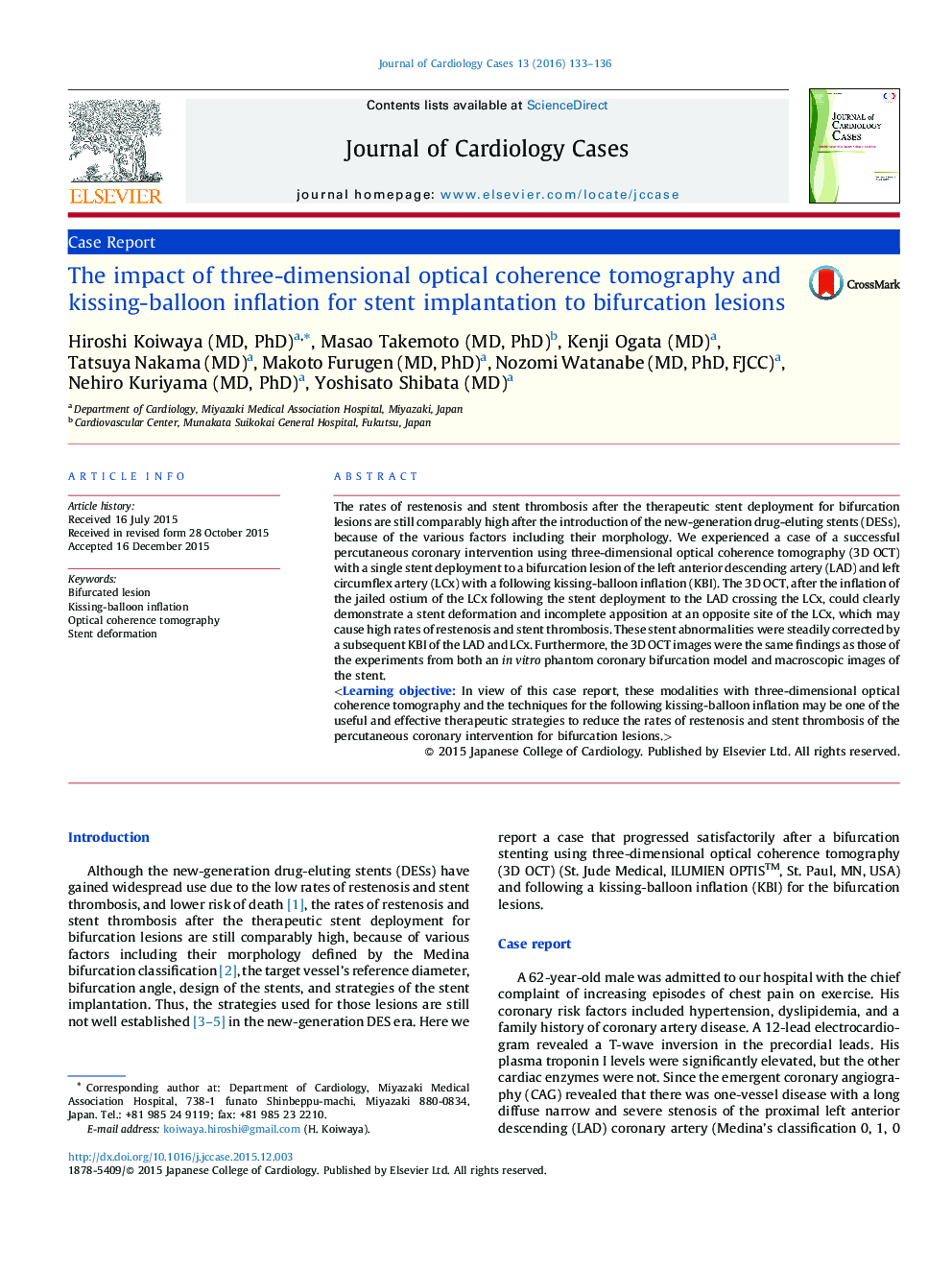| Article ID | Journal | Published Year | Pages | File Type |
|---|---|---|---|---|
| 5984418 | Journal of Cardiology Cases | 2016 | 4 Pages |
The rates of restenosis and stent thrombosis after the therapeutic stent deployment for bifurcation lesions are still comparably high after the introduction of the new-generation drug-eluting stents (DESs), because of the various factors including their morphology. We experienced a case of a successful percutaneous coronary intervention using three-dimensional optical coherence tomography (3D OCT) with a single stent deployment to a bifurcation lesion of the left anterior descending artery (LAD) and left circumflex artery (LCx) with a following kissing-balloon inflation (KBI). The 3D OCT, after the inflation of the jailed ostium of the LCx following the stent deployment to the LAD crossing the LCx, could clearly demonstrate a stent deformation and incomplete apposition at an opposite site of the LCx, which may cause high rates of restenosis and stent thrombosis. These stent abnormalities were steadily corrected by a subsequent KBI of the LAD and LCx. Furthermore, the 3D OCT images were the same findings as those of the experiments from both an in vitro phantom coronary bifurcation model and macroscopic images of the stent.
